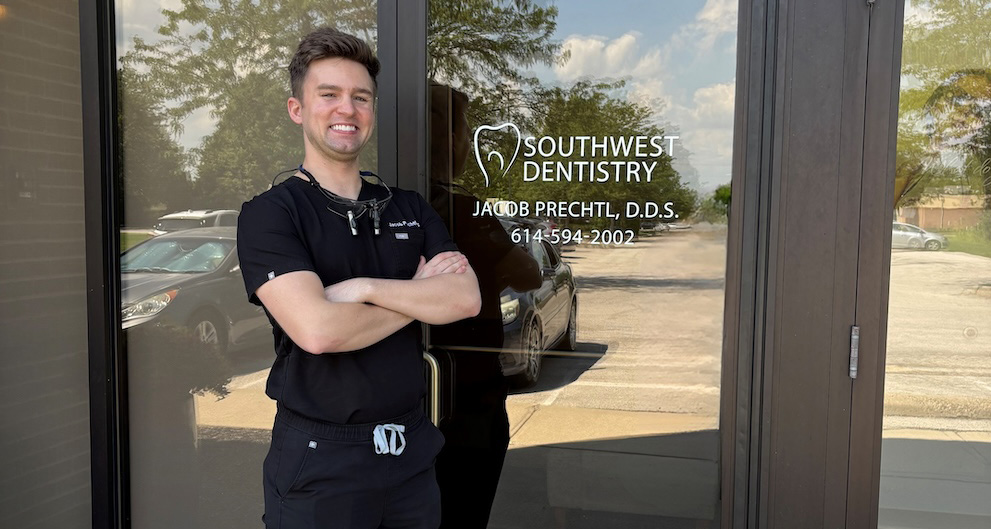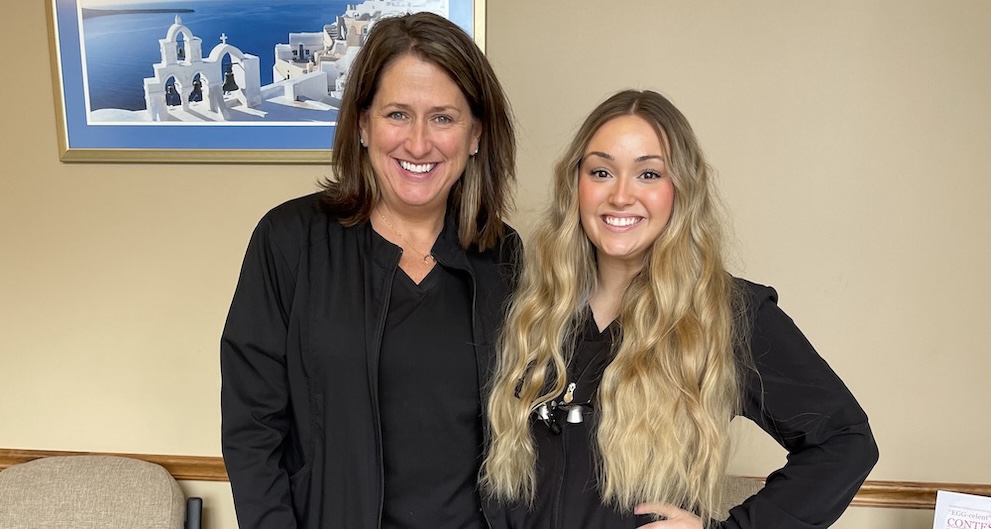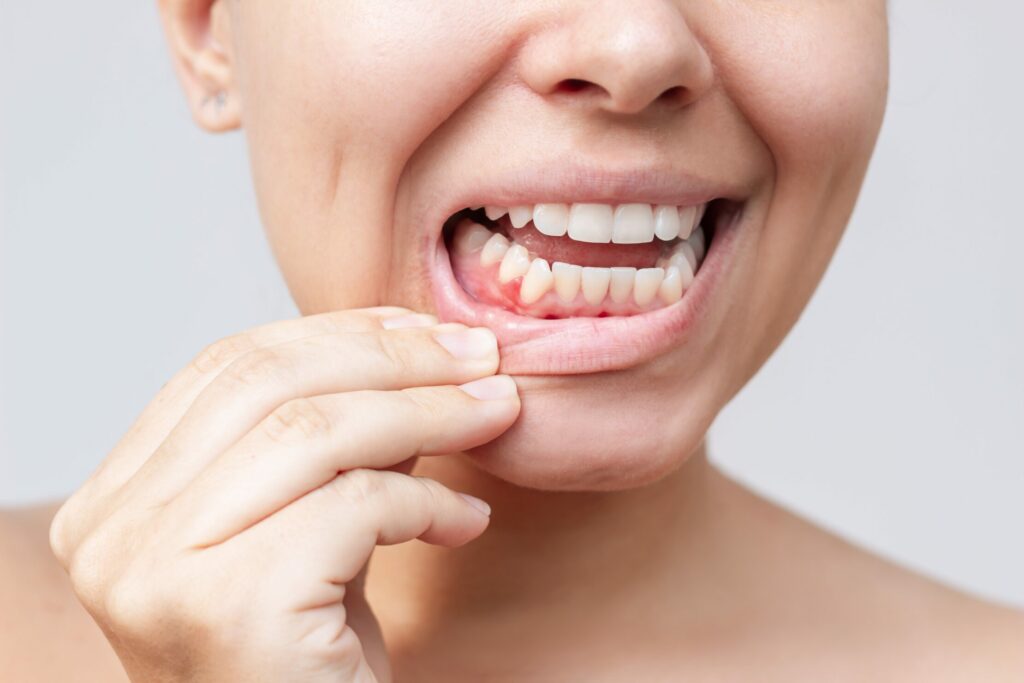When we talk about dental health, it’s easy to focus on the appearance of our teeth. But without healthy gums to support them, even the brightest smile is at risk. Periodontal disease, also known as gum disease, is one of the most common oral health issues affecting adults, and one of the most overlooked. At Southwest Dentistry in Grove City, OH, we take a comprehensive approach to gum health, offering advanced periodontal disease treatment tailored to your unique needs and goals.
If you’re experiencing bleeding gums, gum recession, or persistent bad breath, you’re not alone. With the right care, periodontal disease can be managed, and in many cases, reversed.
What Is Periodontal Disease and Why Does It Matter?
Periodontal disease is a chronic bacterial infection that affects the gums and the bone that supports your teeth. It often starts silently, with little to no pain, which means many people don’t realize they have it until it has progressed. Early-stage gum disease, known as gingivitis, causes inflammation, redness, and bleeding. With proper treatment and good oral hygiene, gingivitis is reversible.
However, if left untreated, it can progress to periodontitis, a more advanced form of the disease that leads to permanent damage. The gums begin to pull away from the teeth, forming deep pockets that trap bacteria. Over time, this can cause bone loss, loose teeth, and eventually tooth loss. Periodontal disease has been linked to serious health conditions like heart disease, stroke, diabetes, and even Alzheimer’s.
At Southwest Dentistry, we focus on early diagnosis, preventive care, and personalized treatment, because healthy gums don’t just protect your smile, they protect your overall health.
How to Know If You Have Gum Disease
Many patients are surprised to learn they have gum disease because the symptoms can be subtle in the early stages. If you’ve noticed any of the following changes in your mouth, it may be time for a periodontal evaluation:
You might see your gums bleed when you brush or floss, or they might appear redder and puffier than usual. Some people experience persistent bad breath or a bad taste in the mouth, which is caused by the buildup of harmful bacteria. Gum recession is another warning sign. Your teeth may start to look longer as the gums pull back. As the condition worsens, teeth can become loose or shift out of place, and chewing may become uncomfortable or even painful.
We encourage anyone experiencing these symptoms to schedule an appointment. Identifying the disease early gives us the best chance to treat it effectively and save your natural teeth.
Diagnosing Periodontal Disease at Southwest Dentistry
At Southwest Dentistry, we don’t take a one-size-fits-all approach to gum health. We begin with a comprehensive exam to evaluate the health of your gums, teeth, and underlying bone. This includes measuring periodontal pockets, the spaces between your teeth and gums, using a small dental probe. Deeper pockets often indicate advanced disease.
We also use digital X-rays to check for bone loss and review your full medical and dental history. Certain health conditions, medications, and lifestyle factors like smoking or diabetes can increase your risk for gum disease. With this detailed information, we’re able to create a personalized treatment plan that fits your specific situation.
Treating Gum Disease: From Deep Cleaning to Surgical Care
Scaling and Root Planing: The Foundation of Gum Health
One of the first lines of defense against gum disease is a procedure called scaling and root planing. This deep cleaning technique removes plaque and hardened tartar from below the gumline, where regular brushing and flossing can’t reach. After the plaque is removed, we smooth the root surfaces of the teeth, which helps the gums reattach and reduces the risk of further bacterial buildup.
The process is typically completed over one or two visits, and we may recommend antibacterial rinses or medications to help control infection. Most patients find the procedure straightforward and are able to return to normal activities the same day.
You’ll also receive guidance on improving your at-home oral hygiene routine. Treating gum disease is a partnership, and we’re here to support you every step of the way.
Gum Grafting: Rebuilding Lost Tissue
As gum disease progresses, one of the most visible effects is gum recession. Not only can this make your smile appear uneven, but it also exposes sensitive tooth roots, increasing the risk of decay and discomfort. That’s where gum grafting comes in.
Gum grafting is a surgical procedure that involves taking tissue, either from the roof of your mouth or from a donor source, and placing it over areas where the gums have receded. This helps protect the roots, reduce sensitivity, and improve the overall appearance of your smile.
Our experienced team customizes your treatment using advanced techniques to ensure natural-looking, long-lasting results. Recovery is generally smooth, and most patients find the improvement in comfort and appearance well worth it.
Bone Grafting: Restoring What’s Been Lost
In more advanced cases of periodontal disease, the infection can destroy the jawbone that holds your teeth in place. Without a healthy bone structure, teeth may become unstable, or it may become impossible to place dental implants.
Bone grafting is a technique we use to regenerate bone that has been lost due to gum disease or tooth extraction. We use grafting materials—either your own bone, donor tissue, or synthetic substitutes—to encourage new bone growth. Over time, this helps rebuild a stable foundation for teeth or implants.
Bone grafting can be a game-changer for patients looking to restore both oral function and facial aesthetics. It’s also a vital part of treatment for anyone considering future tooth replacement options.
Ridge Augmentation: Restoring Natural Contours
Tooth loss and bone deterioration can lead to a flattened or sunken appearance in the jaw, which not only affects function but can also impact self-confidence. Ridge augmentation is a specialized grafting procedure that restores the natural height and width of the jawbone, improving both appearance and implant compatibility.
Using advanced techniques, we rebuild the ridge with carefully placed graft material, followed by a healing period to ensure proper integration. This procedure enhances facial structure and also supports long-term oral health.
Periodontal Maintenance: Keeping Disease from Coming Back
After gum disease is treated, the work isn’t over. Ongoing maintenance is key to preventing relapse. Periodontal maintenance appointments take the place of your typical dental cleanings and are scheduled more frequently, usually every three to four months.
During these visits, we clean below the gumline, assess gum pocket depth, take updated X-rays if needed, and screen for any signs of recurring disease. This continuous care approach helps catch issues early and ensures your gums stay healthy for the long haul.
Periodontal Health and Dental Implants
Thinking about dental implants? Healthy gums and strong bone are essential. If you have a history of gum disease, we’ll assess your periodontal condition carefully and treat any issues before moving forward with implant placement.
For some patients, this may mean undergoing scaling and root planing, bone grafting, or periodontal maintenance before implants can be placed. We’ll work with you to build a step-by-step treatment plan that prioritizes long-term success.
What to Expect: Comfort, Recovery, and Aftercare
We know the idea of periodontal treatment can feel intimidating. That’s why your comfort is always our top priority. For procedures like scaling, root planing, or surgery, we offer local anesthesia and sedation options to help you feel relaxed and pain-free.
After treatment, you’ll receive detailed instructions to support your recovery at home. This includes tips for brushing, rinsing, managing swelling, and avoiding foods that might irritate healing tissues. Most patients experience only mild discomfort and are back to normal routines within a few days.
Preventing Gum Disease at Home
While professional care is critical, your habits at home are equally important. To keep your gums healthy between visits:
- Brush twice a day with a soft-bristle brush
- Floss daily to clean between teeth
- Use an antimicrobial mouth rinse if recommended
- Eat a balanced, low-sugar diet
- Avoid smoking, which significantly increases gum disease risk
Our team is always happy to offer tips and techniques to help you improve your at-home routine.
Take Control of Your Gum Health Today
Gum disease can be serious, but it’s also treatable, and you don’t have to face it alone. At Southwest Dentistry, we’re more than just your dental provider; we’re your partner in lifelong oral health. With extensive experience in periodontal disease treatment and state-of-the-art tools at our fingertips, our compassionate team is here to help you protect your smile at every stage.
If you’re experiencing symptoms or haven’t had your gums checked in a while, now is the time. Let us help you restore your gum health and your confidence.

 Meet Dr. Jacob Prechtl
Meet Dr. Jacob Prechtl Meet The Team
Meet The Team


